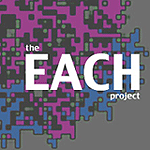

| Home | Activities | Papers | Models | Researchers |
 |  | ||||
|
|
Papers
|
|
To be Presented at the ICLS 2000 A Hands-on Modeling Approach to Evolution: Learning about the Evolution of Cooperation and Altruism Through Multi-Agent Modeling - The EACH Project Abstract: This paper presents a hands-on approach to learning about evolution; specifically, the evolution of altruistic and cooperative behavior. The classical view of individual selection stresses the importance of competition between individuals for resources and survival. On this view, altruistic and cooperative behavior appear to be disadvantageous for evolutionary success. However, looking at evolution as a complex system, altruism and cooperation can be seen as valuable traits for individual survival. The EACH project developed hands-on materials that enabled students to engage and test their intuitions about the fitness and evolutionary success of altruistic behavior. The primary materials consisted of a set of multi-agent models (written in StarLogoT) and associated activities that guided students in exploring evolutionary scenarios. Through their involvement in the EACH project, many students who had started with an understanding of evolutionary fitness as a trait of isolated individuals came to appreciate the complexity of environmental and social factors in the evolutionary process. Link to Paper
Presented at the ICCS 2000 Survival of the Groupiest: Facilitating Studentsą Understanding of the Multiple Levels of Fitness through Multi-Agent Modeling The EACH Project Abstract: This paper presents a hands-on approach to learning about complexity in evolution. Students are traditionally taught to think about evolution, and specifically fitness, in terms of the competition among same-species individuals for reproductive success. However, this understanding of fitness can promote misleading intuitions about how the evolutionary process works. An approach to teaching evolution that focuses solely on individual factors limits studentsą abilities to understand the complex ways in which environmental and social factors bear on the evolutionary success of individuals. In particular, the classical view of natural selection, as captured in the phrase "survival of the fittest", can obfuscate the possibility for understanding how altruistic and cooperative behavior can be advantageous for evolutionary success. In more recent work looking at evolution from a complex systems perspective, individual fitness can be seen as a multi-level phenomenon. By considering the interaction between individual, group, and environmental factors as constitutive of individual fitness, altruism and cooperation can be seen as valuable traits for individual survival. As part of the EACH project, we developed hands-on materials that are enabling students to engage and test their intuitions about the fitness and evolutionary success of altruistic behavior. The primary materials consist of a set of multi-agent models (written in StarLogoT) and associated activities that guide students in exploring the complexity of evolutionary scenarios. In one set of models, students explored the effects of environmental conditions, such as harshness and disease, on the formation of groups, and the success of altruistic behavior. In another set of models, co-developed by project researchers and a student learner, students explored the effects of population viscosity on the well being of cooperative populations. By experimenting with different levels of interaction between group formation, environmental conditions, and individual behaviors, students developed increasingly sophisticated conceptualizations of "fitness", and were able to extend project models and create new models for exploring complex evolutionary scenarios. Many students who had started with an understanding of evolutionary fitness as a trait of isolated individuals came to appreciate the complexity of environmental and social factors in the evolutionary process. Link to Paper |